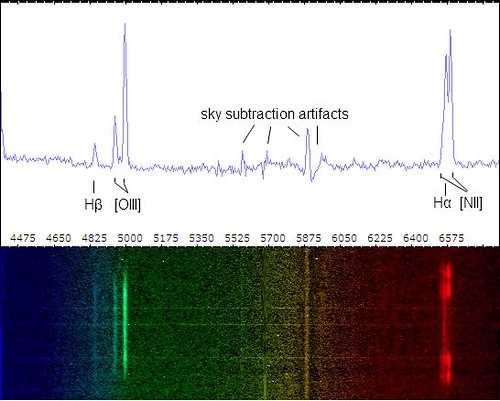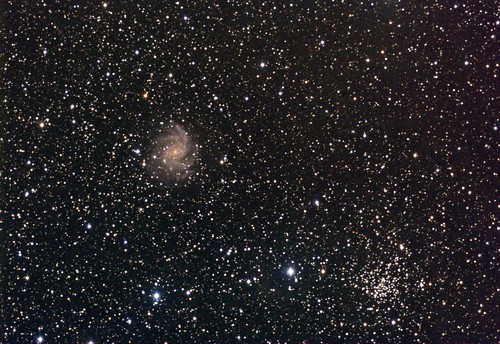Planetary Nebulae are dynamic structures, in constant expansion. Their birth may be far less explosive than Type Ia supernovae, though we can imagine some symptoms of stellar indigestion that culminate in large-scale pulsations or mass ejections. Perhaps an extreme exaggeration of how our sun often spits particles in solar storms might help illustrate how the atmosphere ends up leaving the star behind, in one big, stellar-sized "cough". We could imagine a Red Giant star pulsating through two or three such seizures before the last of them strips the core of the star naked, thus revealing the White Dwarf within.. The material then sails the stellar wind, away from the star, glowing in atomic colours..
If we would build our Planetary Nebula by leaving material lying around with no initial velocity it would all eventually fall back onto the star, causing some sort of forced refuelling of the moody White Dwarf. That could make the star angry, and likely result in heavier elements being created in an atomic fusion process.. Hmm, I just had a dangerously Ironic (Fe) thought, but its not our goal now, as fusing Iron is usually "super-novic" and would destroy our nebular creation..
Focusing back on our goals again, for creating our Planetary Nebula we what to mimic NGC 7293, which has some really interesting concepts and features! All that ejecta mentioned will have gone out towards space. Some faster, some slower, but all away from the central star. Again spectroscopy can lend a hand here, this time in "High Resolution" (dispersion: wavelength per pixel). Dispersion high-enough to make visible the Doppler shift of the expansion fronts.
If you imagine a semi-transparent baloon that is being inflated, in the middle of the balloon you will see the central star, and aside it you will see the surface of the balloon that is moving towards you, and the other surface moving away. So, for the colour that is being emitted on the "balloon walls" we should see half of it shifted to the blue, and another half shifted to the red. Seen in the image below, this particular shift of roughly 1.7 angstroms between the two walls translated to a velocity difference of, give or take, 49 km/s along the direction of sight, making the expansion rate of the "ionization front" of half that: 24,5 km/s, just like astrophysicists had previously measured! The spectrum also lets us know which parts of the nebula are moving toward us or away, as illustrated on the right.
This particular colour wavelength we are looking at corresponds to a certain amount of ionization, as mentioned in the previous post. Radiation from the star reaches this area with enough intensity to ionize gas. It is thought that this ionization does not occur further outside because the density of this gas and dust prevents it. Some portion of the gas/dust may be "in the shade" from receiving UV radiation in the needed quantity to get ionized, thus we are not able to see that area in this wavelength. If we were to look at this object in CO wavelength (radio) we would find leftovers from previous mass ejections, and measuring their speeds we would find the values wikipedia states (32 and 40 km/s).
For our Nebula, we can further decorate the interior with the sort of detail we see on NGC 7293, arising from the various ejections at different velocities and their interaction with stellar wind! As result of the various ejections of gas and dust in the past, the space around the nebula has become crowded with chunks of material moving away from the star. A speedier ejection actually met up with this material left behind the now-stronger stellar wind is currently eroding its way through it. This is visible as cusps of matter that leave a cometary tail behind, as they get "eroded" by the radiation streaming out of the star.
So all this are good ideas for how to make and decorate a Planetary Nebula realistically. As a final tip, always keep in mind that a radiation-bounded nebula (where portions of if are hauntingly concealed from sight, shaded from the illuminating star) will keep people interested in it for longer time. Always keep your creations mysterious to the human eye; they always captivate new minds, and work as an excellent advertising tool for the wonders of space! I wish you the best of luck in creating your first Planetary Nebulae!




